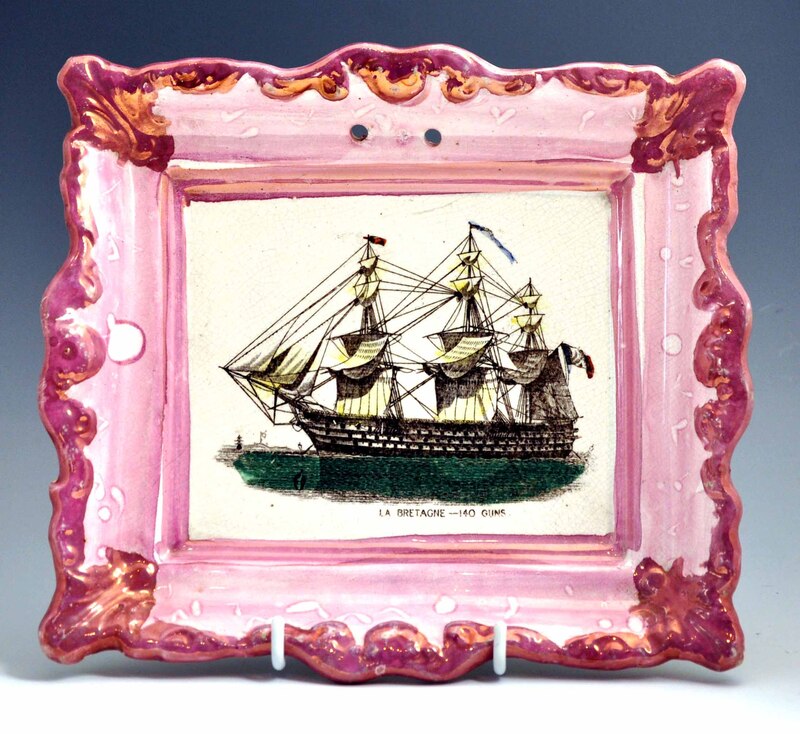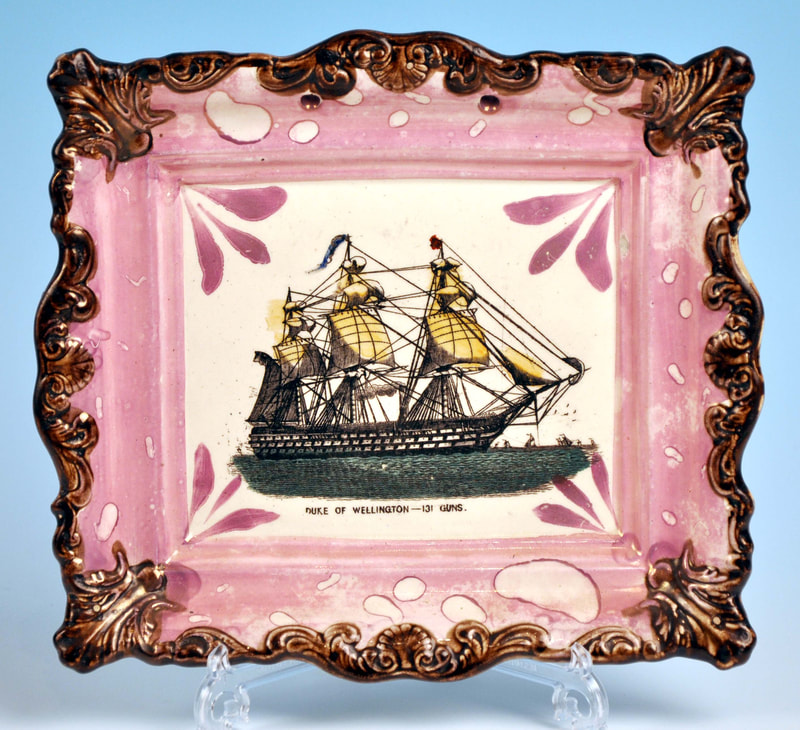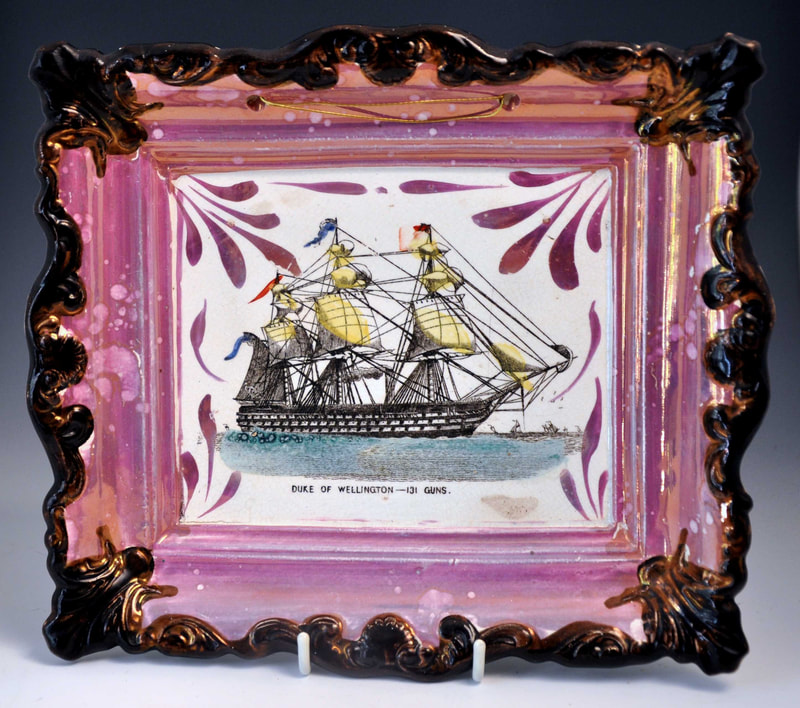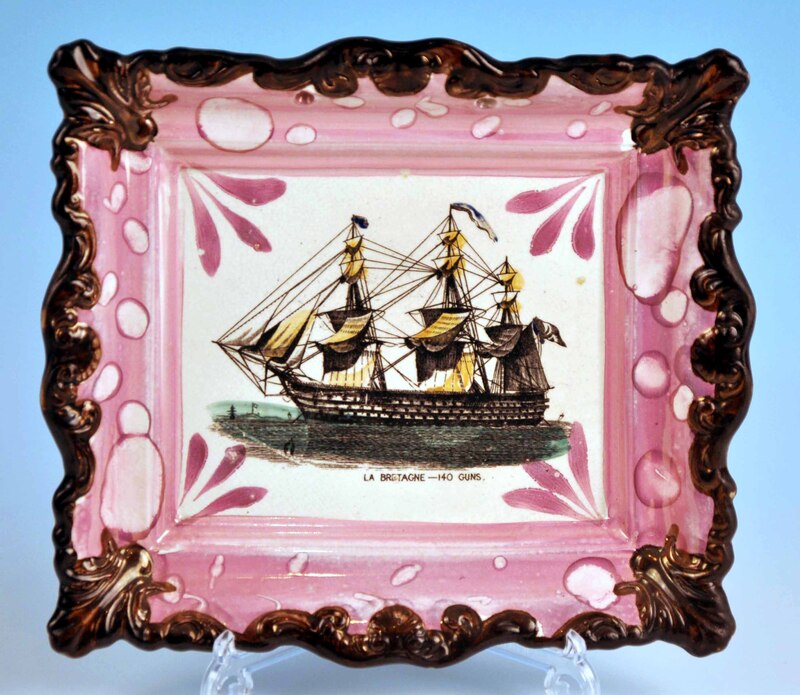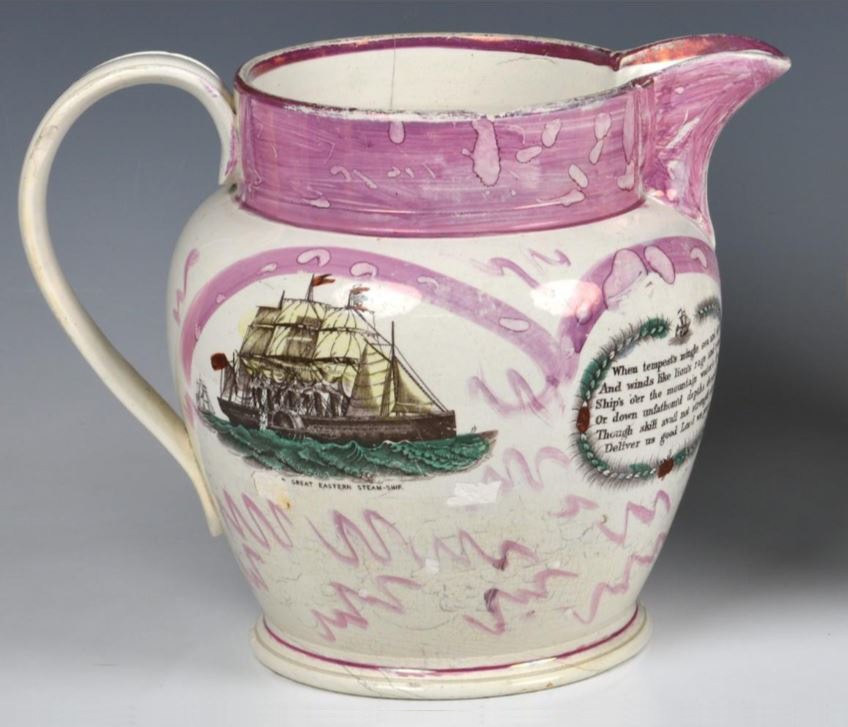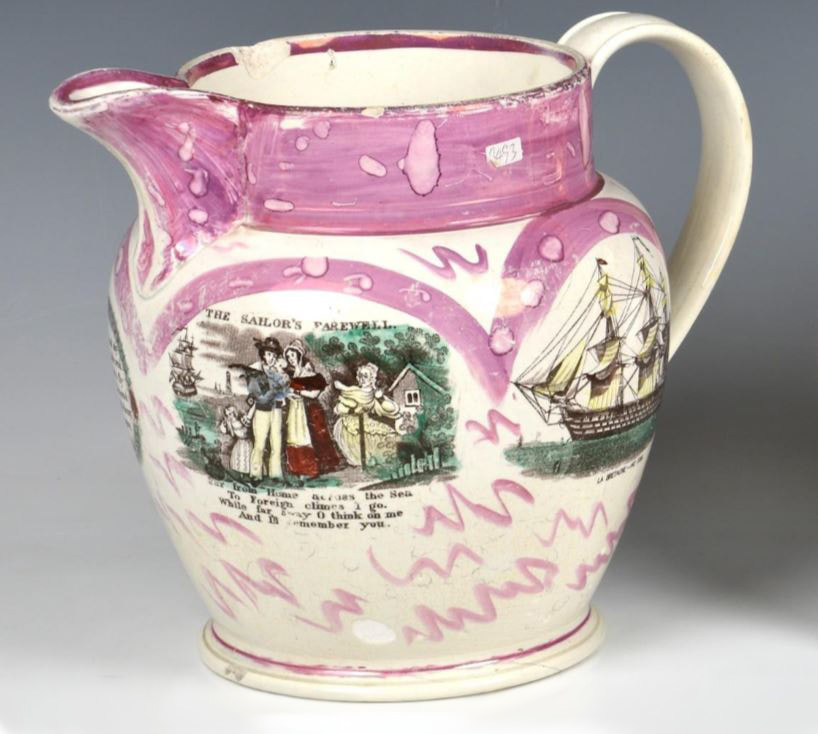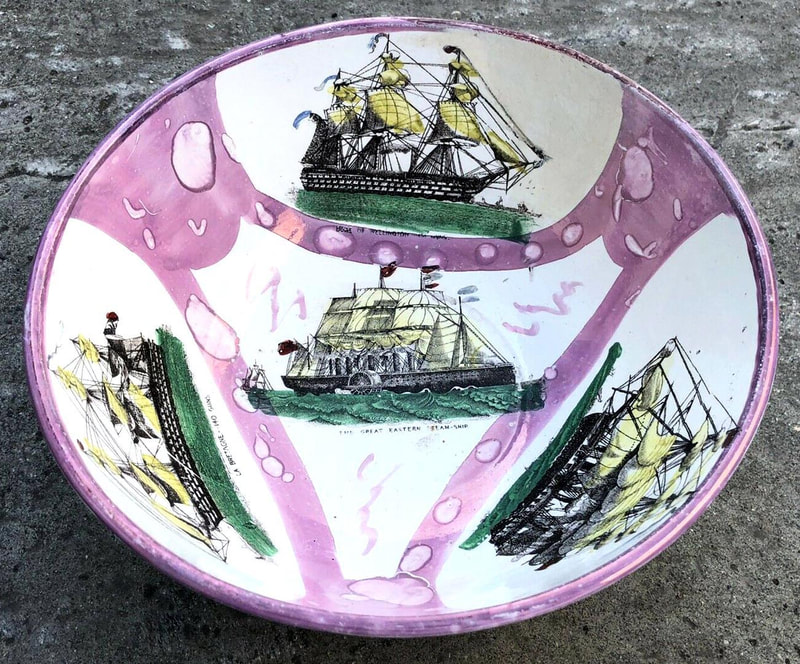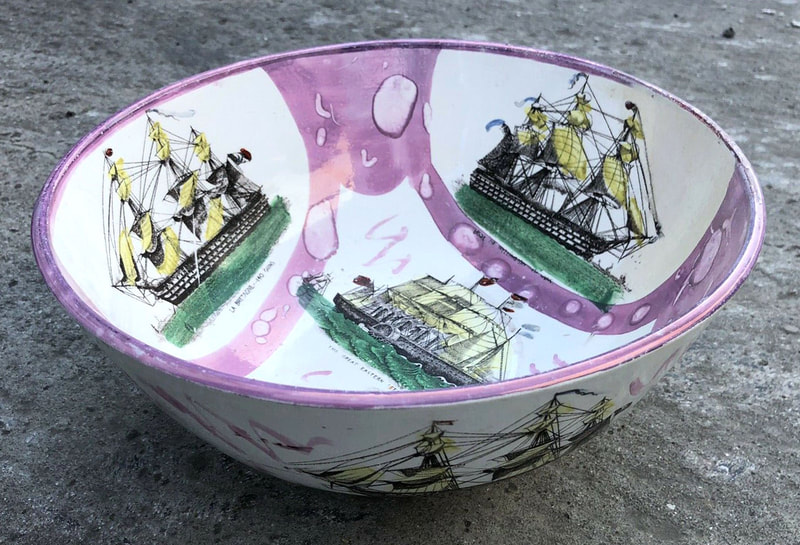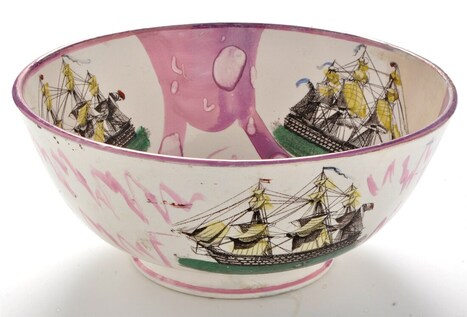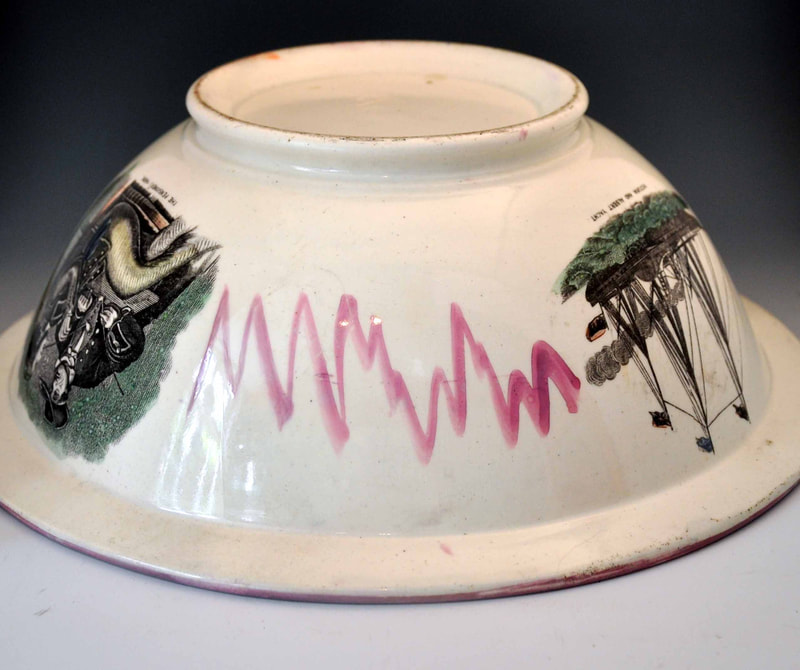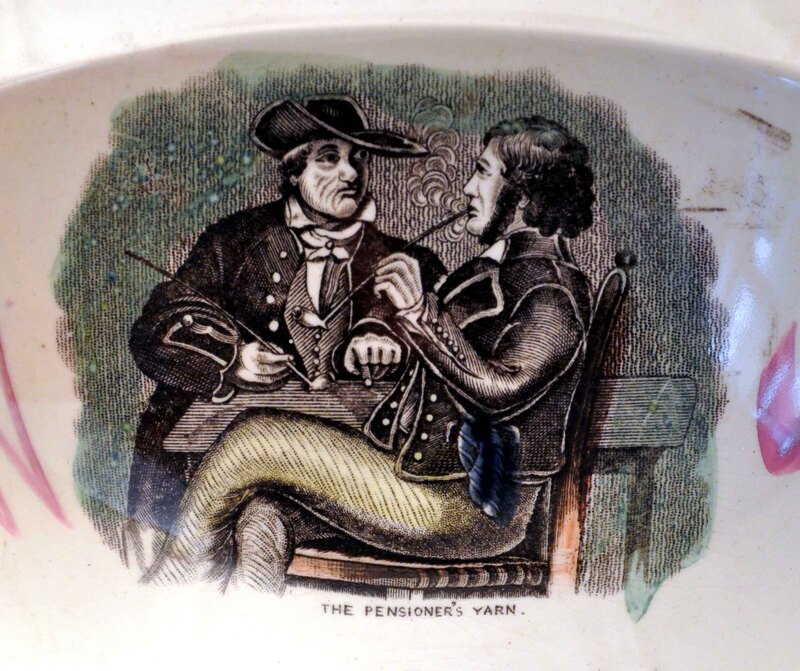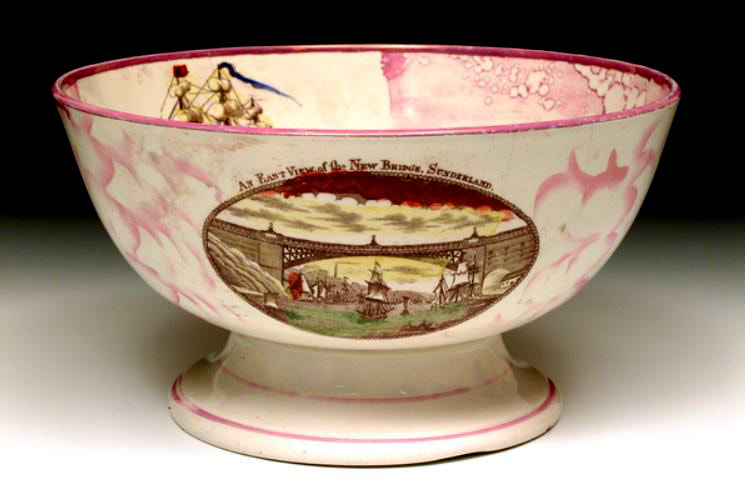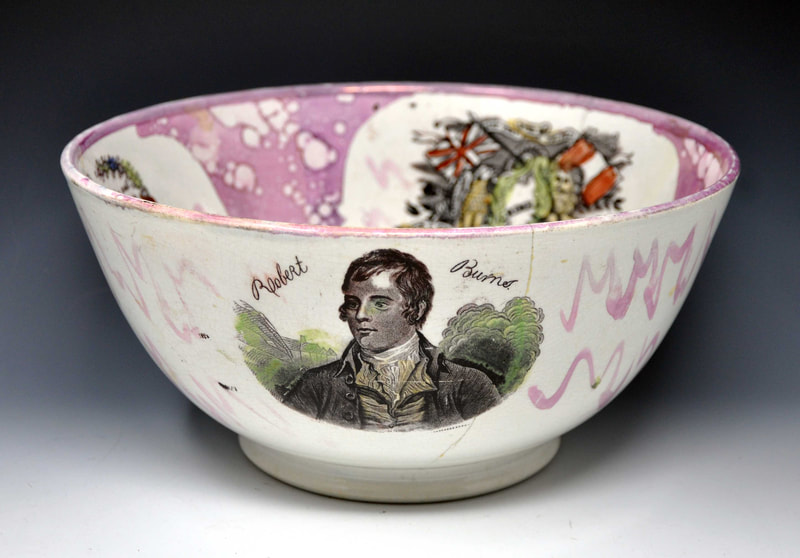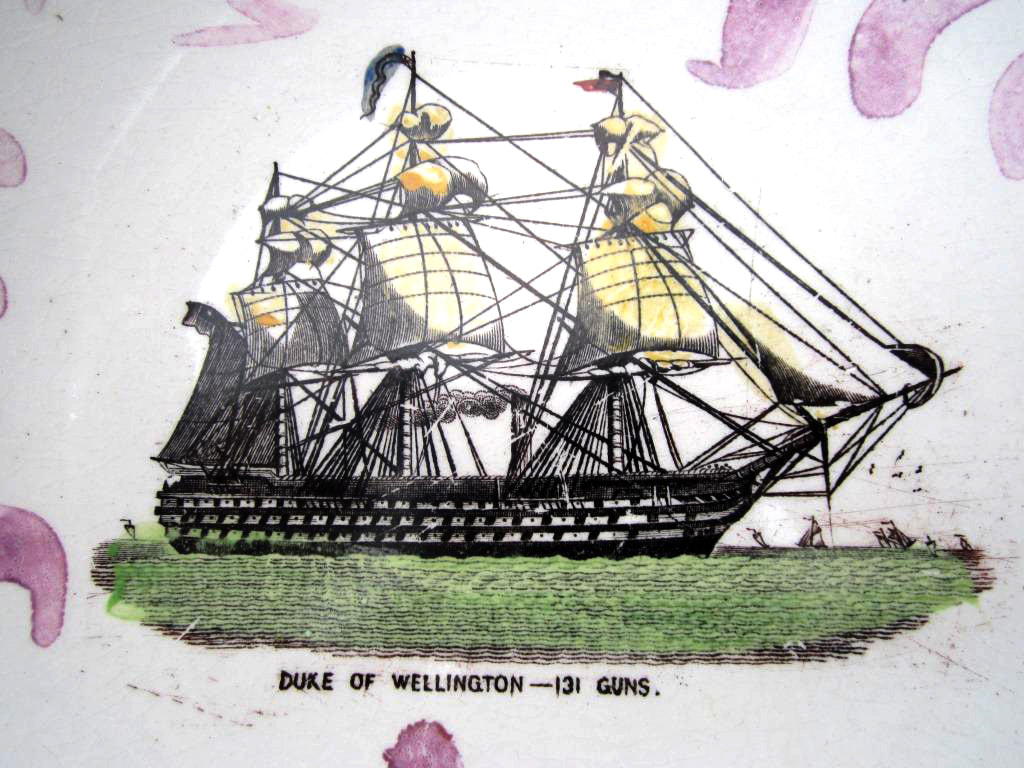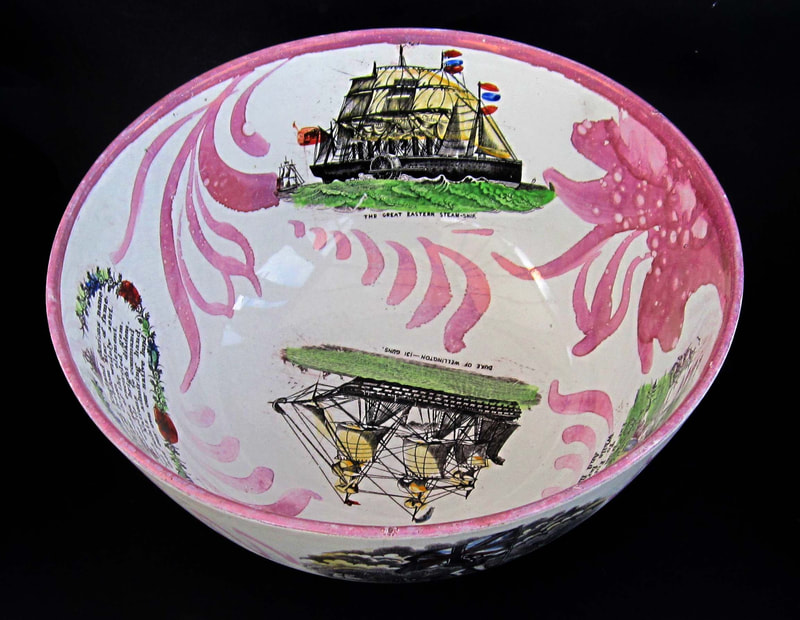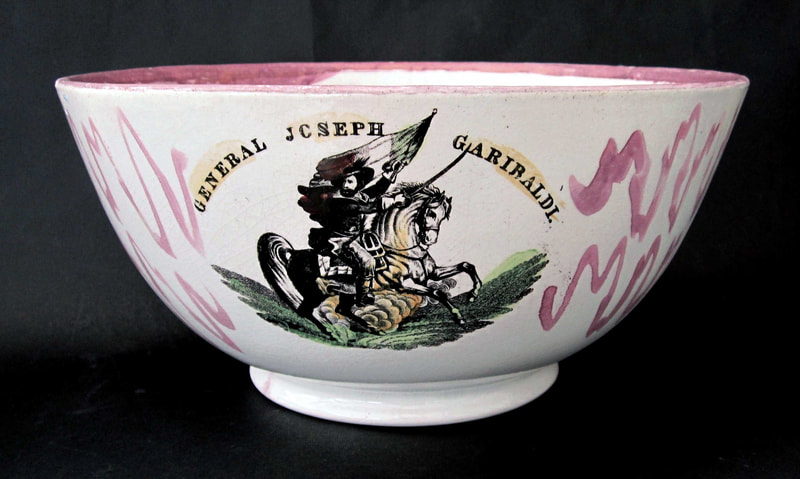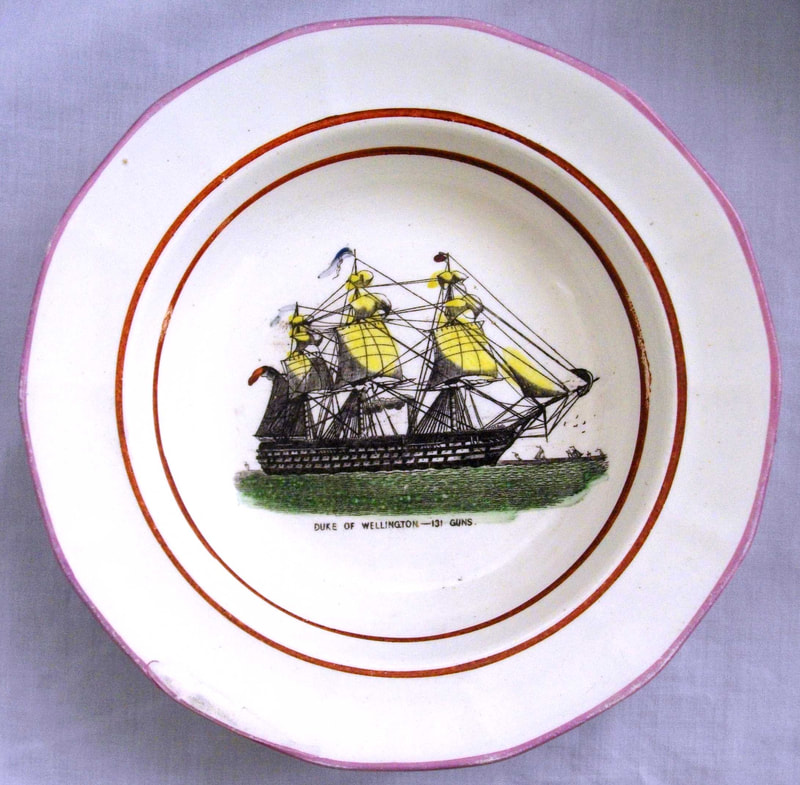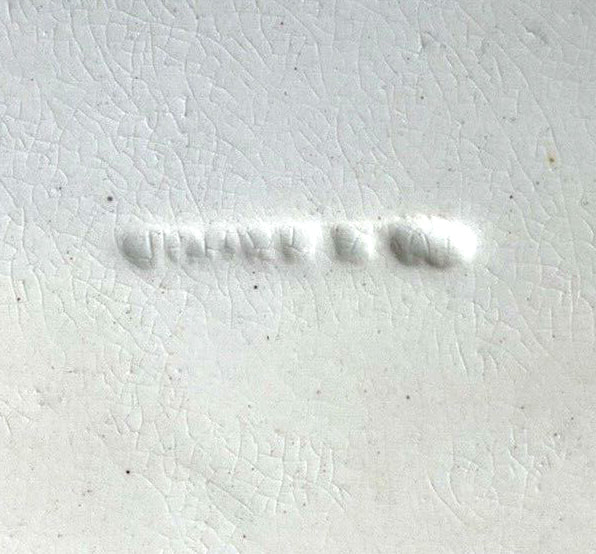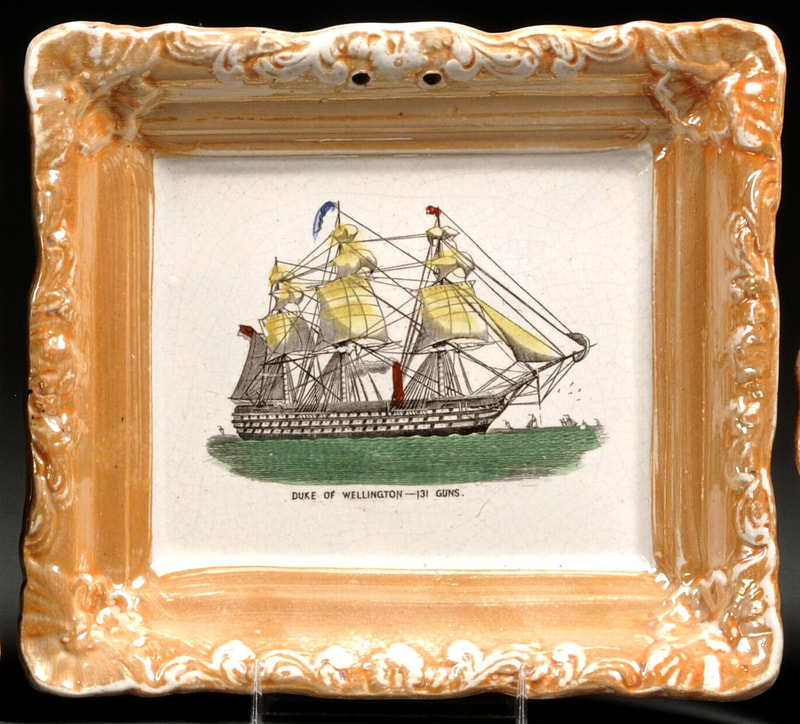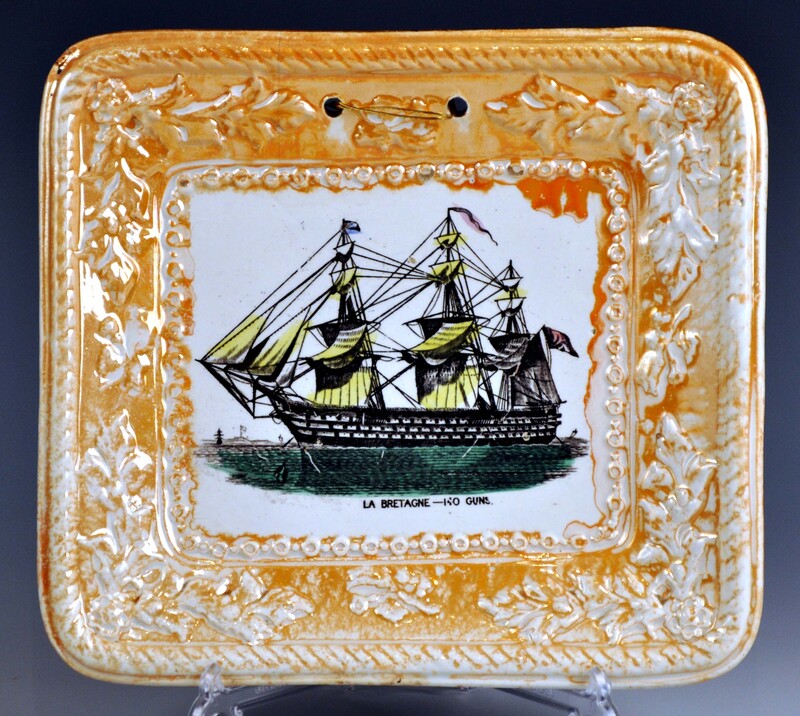Duke of Wellington – 131 Guns / La Bretagne – 140 Guns
The left image above from the Illustrated London News in 1854 titled 'The Duke of Wellington, Flag-ship of Vice-Admiral Sir Charles Napier, Weighing Anchor'. The right image above is the cover illustration of 'Naval Fleets of the World' circa 1859, and shows La Bretagne drying her sails.
Moore & Co's Wear Pottery and Scott's Southwick Pottery
About 10 years ago, on my plaque website Mate Sound the Pump, I listed these transfers as 'common ships'. That's because they appear more frequently on plaques than the other Moore ships. There are two reasons for that. Firstly, this was one of the first 'Moore ships' copper plates to be engraved, so it was in service longer. (The ships were mostly launched in the mid 1850s. The latest being the Great Eastern in 1858.) But secondly, these images were used almost exclusively on plaques, and appear much more rarely on jugs and bowls. My inkling is that's because (unlike the later Moore ships) the copper plate was made up exclusively of pictorial transfers: Duke of Wellington, Euryalus, Great Eastern (small version), La Bretagne, Victoria and Albert Yacht, and possibly the Pensioner's Yarn (although that transfer appears less frequently). Whereas, bowls and jugs were nearly always decorated with a mixture of images and verses.
The title 'common ships' belies the fact that some examples are much rarer than others. It is hard to find examples on pink-bordered plaques, like the first row below from the 1850s, and even harder to find pink-bordered examples with Moore & Co impressed marks. The bottom three plaques are the more common type made in large numbers in the 1860s. However, more elaborately decorated examples, like the plaque below centre, are again relatively scarce.
The title 'common ships' belies the fact that some examples are much rarer than others. It is hard to find examples on pink-bordered plaques, like the first row below from the 1850s, and even harder to find pink-bordered examples with Moore & Co impressed marks. The bottom three plaques are the more common type made in large numbers in the 1860s. However, more elaborately decorated examples, like the plaque below centre, are again relatively scarce.
Below, a rare outing of the Bretagne transfer on a jug, with typical Moore heavy lustre to the collar and zig-zag lustre decoration. The Sailor's Farewell and verse transfers are from a different transfer plate.
The transfers appear on bowls with both Scott and Moore impressed marks. The most obvious explanation being, as Baker writes, that 'Scott's supplied earthenware to Moore's Wear Pottery [...] presumably plain for decoration' (Baker page 54). This is borne out by the fact that the bowls marked Scott (see next section below) have zig-zag lustre decoration and enamelling typical of Moore's.
A wash basin with the transfers, also with the Moore & Co impress over a number '8'. Note the absence of verse transfers on bowl above and below.
A pedestal bowl, from the Sunderland Museum & Winter Gardens, Tyne & Wear Archives & Museums collection, with a Moore & Co impress without a number beneath it. This bowl has the large Great Eastern transfer in the centre and other ship transfers, accompanied by the Crimea transfer and the New Bridge.
Below, a large punch bowl with the SCOTT impress. On the two bowls below the ship transfers appear in conjunction with others from different transfer plates, including verses. Note that the transfer of Robert Burns is unique to Moore's Pottery. Also, note the zig-zag lustre decoration in the shape of a letter 'M'. There's no doubt in my mind that these were 'blanks' supplied by Scott's and decorated by Moore's.
Another bowl with 'Moore ships' marked Scott. This item is more elaborately decorated. However, note that despite the SCOTT impress, the bowl has zig-zag lustre decoration on the outside, like the letter 'M' used by Moore's.
Two soup bowls with the Scott impress and rings of brick-red enamel.
And here's a soup bowl with similar decoration and the Moore & Co impress.
Below, four later plaques with orange lustre, used from about the mid 1860s. The left plaques are of a form used by Scott's and the right plaques, of a form used by Moore's.






